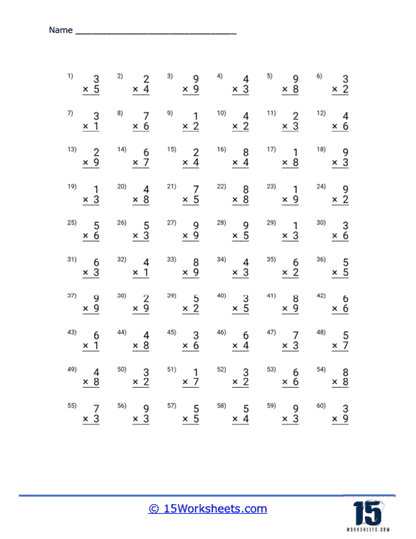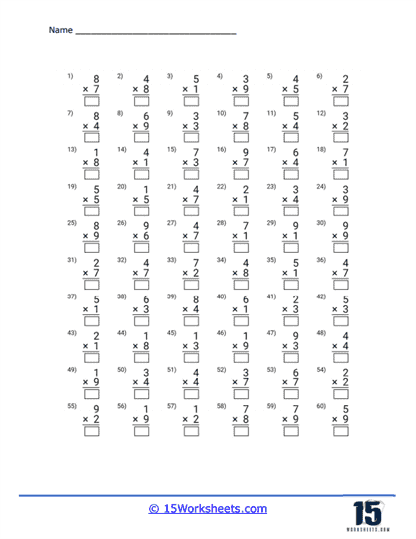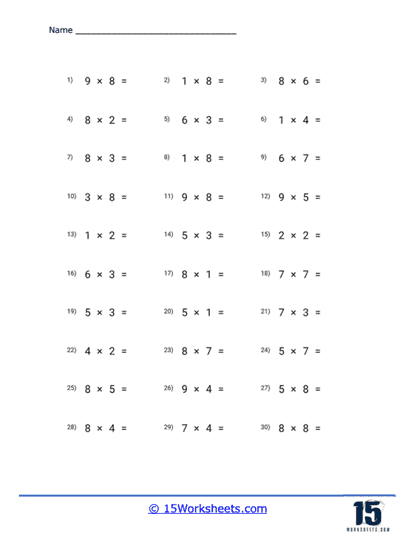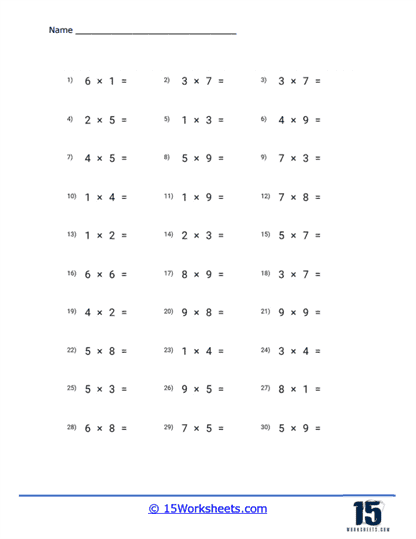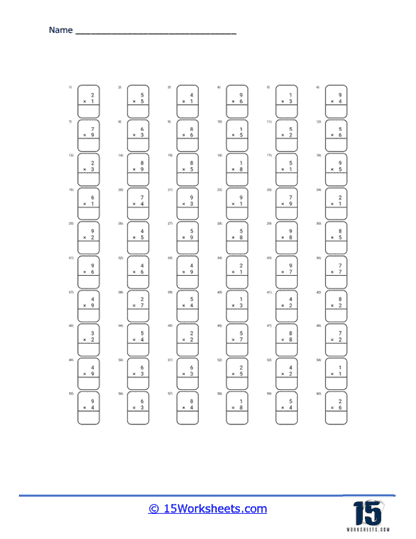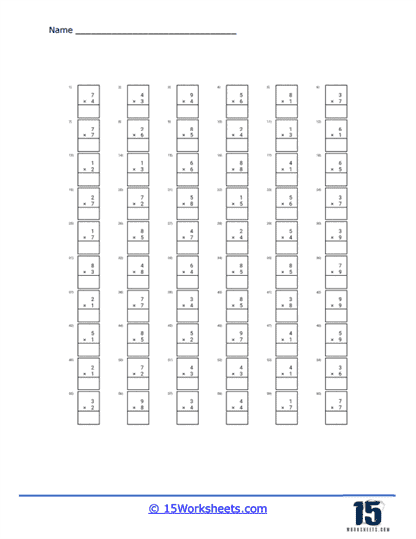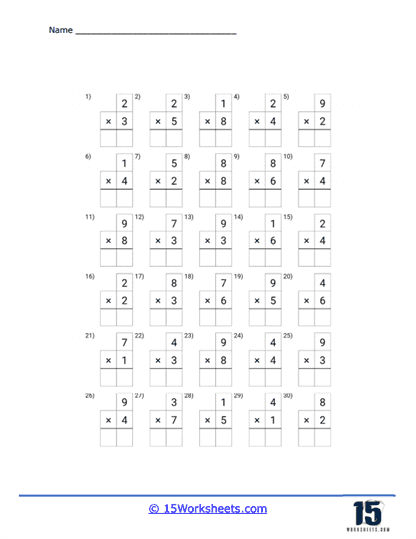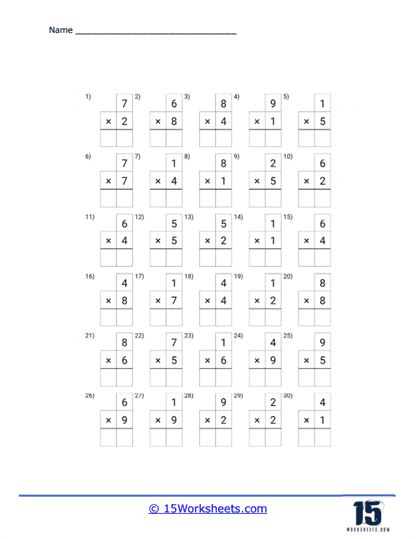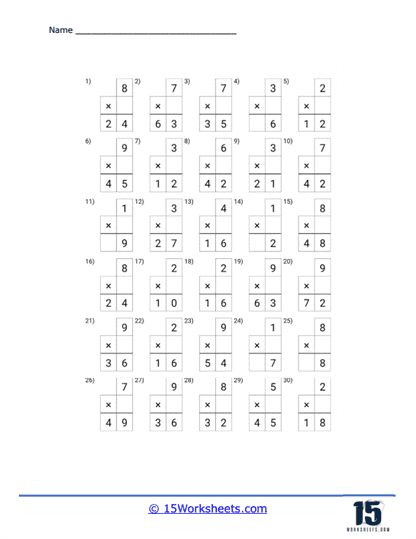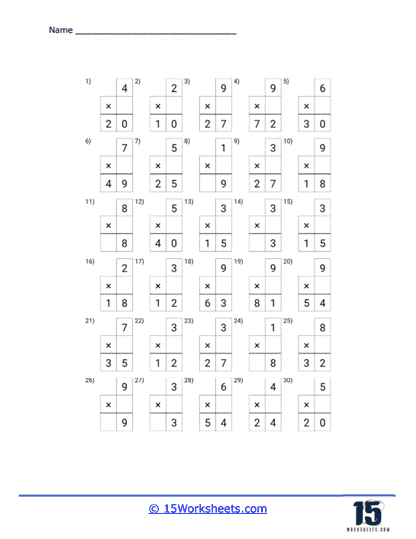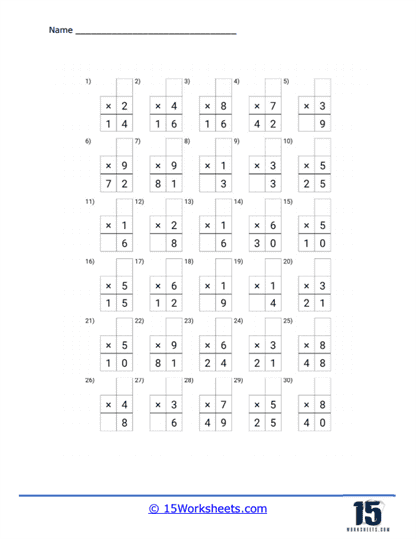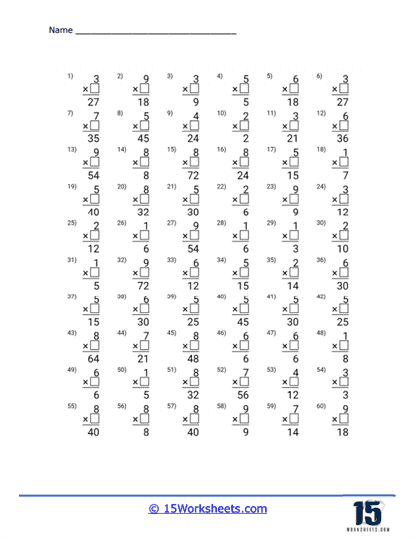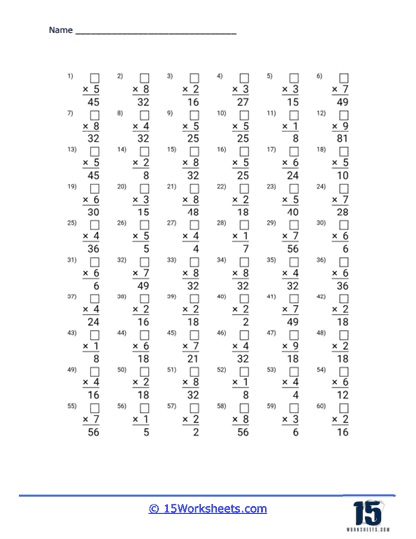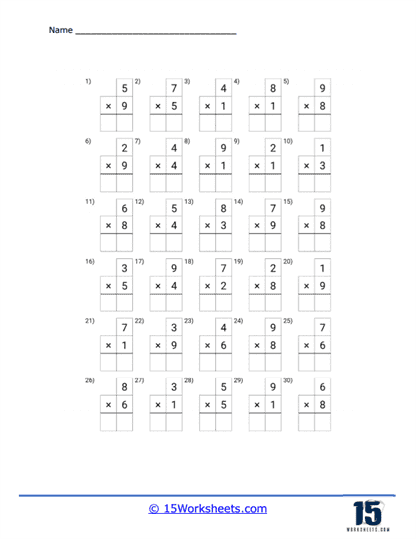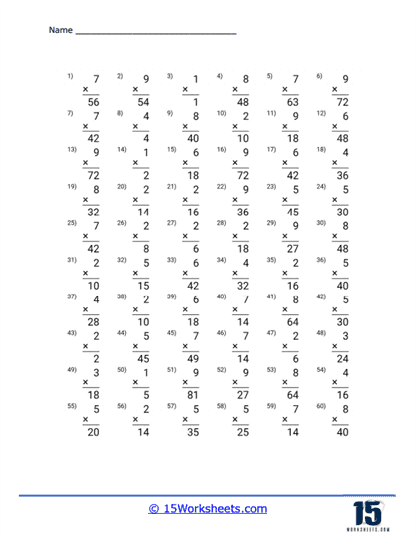Single Digit Multiplication Worksheets
About These 15 Worksheets
These are all pieces of paper filled with challenges that take you one step closer to the treasure – in this case, the treasure is your increased understanding of multiplication and enhanced math skills. A single-digit multiplication worksheet is specifically designed to help you practice multiplying numbers that are only one digit long – like 2, 3, 4, and so on.
Let’s explore why these worksheets are so important and how they can help you improve your math skills:
Grasping the Concept of Multiplication – To start with, single-digit multiplication worksheets help you understand what multiplication really is – repeated addition. For instance, when you’re multiplying 3 by 4 (3×4), you’re basically adding 3 together four times. As you work through the worksheets, this concept will become more and more clear to you.
Developing Basic Arithmetic Skills – Single-digit multiplication is a fundamental arithmetic operation that sets the stage for more complex math. Once you master this, you can easily progress to multi-digit multiplication, division, fractions, and much more. It’s like learning to walk before you can run, and these worksheets are your training wheels.
Enhancing Mental Math Skills – The more you practice, the quicker you get at solving multiplication problems. Over time, you’ll find you can multiply single-digit numbers in your head! This speed and ability are called mental math skills, which are handy in many situations, like calculating how many candies you can buy with your pocket money, or how many cards you need to invite all your friends to your birthday party.
Improving Pattern Recognition – Multiplication is all about recognizing and understanding patterns. For example, when you multiply any number by 0, the answer is always 0. Similarly, multiplying any number by 1 gives you the same number. As you work through your single-digit multiplication worksheets, you’ll start spotting these patterns, and this skill will be useful in many different areas of math and life.
Boosting Confidence and Mastery – As you fill out more and more worksheets, and as multiplication problems start becoming easier, your confidence will grow. This confidence can make you enjoy math more, encourage you to tackle more challenging problems, and give you a sense of accomplishment.
Problem-Solving Skills – Learning to multiply involves solving problems, sometimes by trying different methods or approaches. Each time you solve a problem on your worksheet, you’re actually sharpening your problem-solving skills. This skill is useful not just in math, but in other subjects and everyday situations as well.
Developing Discipline and Perseverance – Mastering multiplication requires patience and practice. There might be times when you make mistakes or find a problem hard to solve. But don’t worry! These are the times when you’re learning the most. Every challenge you overcome teaches you to be disciplined and persistent, two important qualities for achieving success in school and beyond.
Quick Ways to Learn Your Multiplication Facts
Committing single-digit multiplication facts to memory quickly can be achieved through consistent practice and the use of various mnemonic techniques. Here’s a step-by-step approach to help you memorize these multiplication facts efficiently:
Start Easy – Begin by focusing on the multiplication facts involving 0, 1, 2, 5, and 10. These are generally easier to remember and can serve as a foundation for the rest of the facts.
Use Visual Aids – Visual representations can be powerful memory aids. Create a multiplication table or grid with the numbers 0 to 9 along the top and left side. Fill in the table by multiplying the corresponding row and column numbers. Spend time studying and visualizing this grid, noting the patterns that emerge.
Grouping and Patterns – Look for patterns within the multiplication facts. For example, multiplying any number by 1 results in the same number, and multiplying any number by 10 adds a zero to the end. Identifying such patterns helps simplify the memorization process.
Create Mnemonic Devices – Mnemonic devices are memory techniques that use associations or vivid imagery to aid recall. For each multiplication fact, create a memorable phrase or image that connects the two numbers being multiplied. For instance, to remember that 3 x 4 = 12, you could imagine three cats playing with four balls, resulting in a chaotic scene of twelve flying objects.
Repetition and Practice – Regular practice is crucial for reinforcing the memorization process. Create flashcards or use online multiplication practice tools to test yourself. Focus on the facts you find most challenging and review them frequently until they become second nature.

